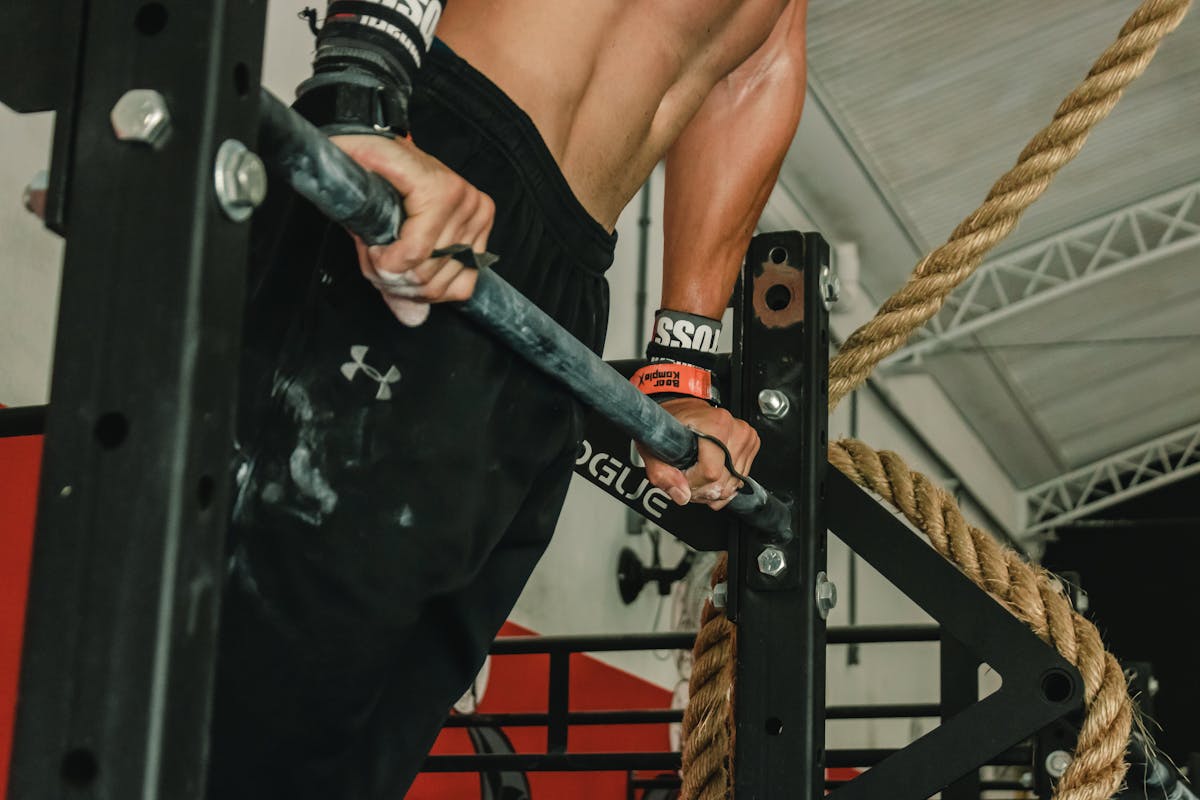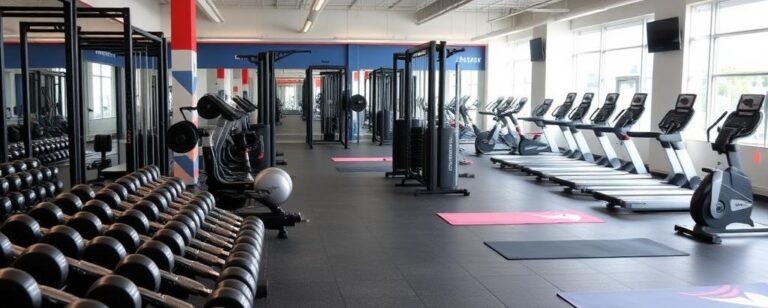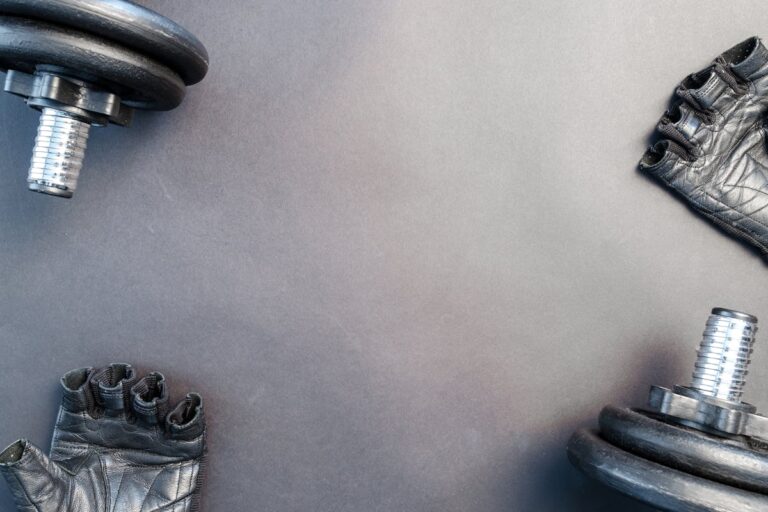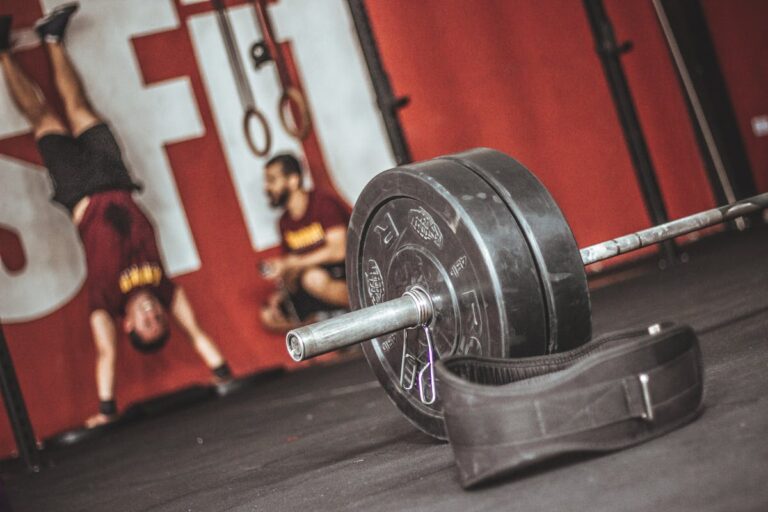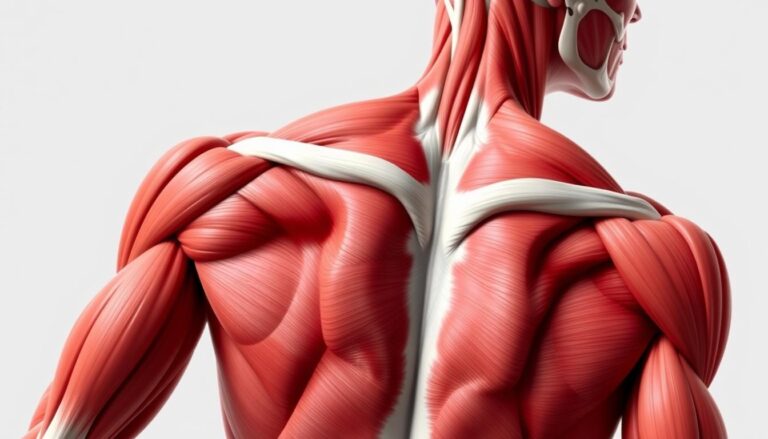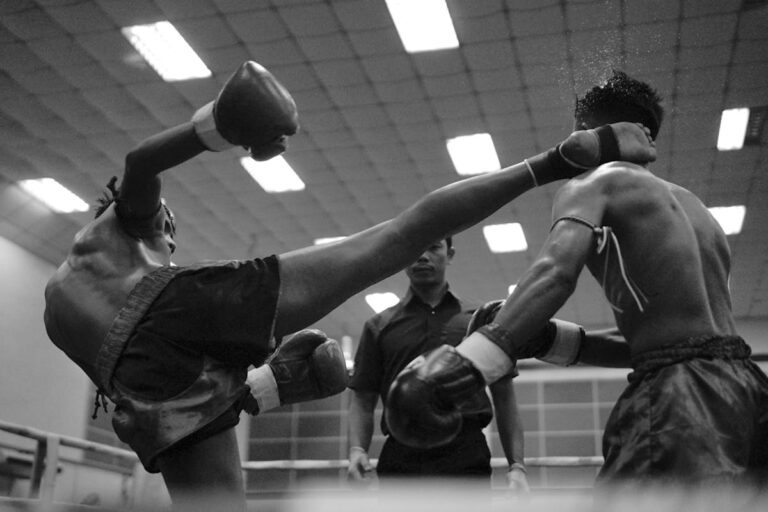Top Chest Workouts for 13-Year-Olds: Safe and Effective Exercises
Top Chest Workouts for 13-Year-Olds
Table of Contents
Why Chest Workouts Are Important for Teens
Chest workouts offer significant benefits for teens, especially those around the age of 13. These exercises are not only about building muscle but also about promoting overall health and fitness. Engaging in chest workouts helps teens in the following ways:
- Posture Improvement:
- Many teens spend extended periods sitting, whether at school or in front of screens. This often leads to poor posture. Chest workouts help strengthen the pectoral muscles, which in turn support better posture and reduce the risk of back pain.
- Strength Building:
- Building chest muscles contributes to overall upper body strength. This strength is essential for various physical activities, including sports and everyday tasks like lifting and carrying items. A strong chest also supports other exercises by providing a stable base.
- Better Physical Aesthetics:
- Adolescents may be concerned about their appearance. Developing the chest muscles can enhance their physical aesthetics, contributing to a more balanced and confident look.
- Injury Prevention:
- Strong chest muscles provide better support to the shoulders and arms. This minimizes the risk of injuries, particularly during physical activities and sports. Proper technique and balanced training ensure that teens avoid undue stress on other parts of the body.
- Boosted Metabolism:
- Engaging in strength training, including chest workouts, can increase metabolism. A higher metabolic rate helps teens manage weight more effectively and promotes a healthier lifestyle.
- Mental Health Benefits:
- Regular physical exercise, including chest workouts, boosts mental well-being by releasing endorphins. These hormones improve mood, reduce stress, and enhance overall mental health. Exercise also fosters discipline and a sense of achievement.
- Development of Healthy Habits:
- Establishing a fitness routine that includes chest workouts at a young age encourages lifelong healthy habits. Adolescents who engage in regular exercise are more likely to continue this practice into adulthood.
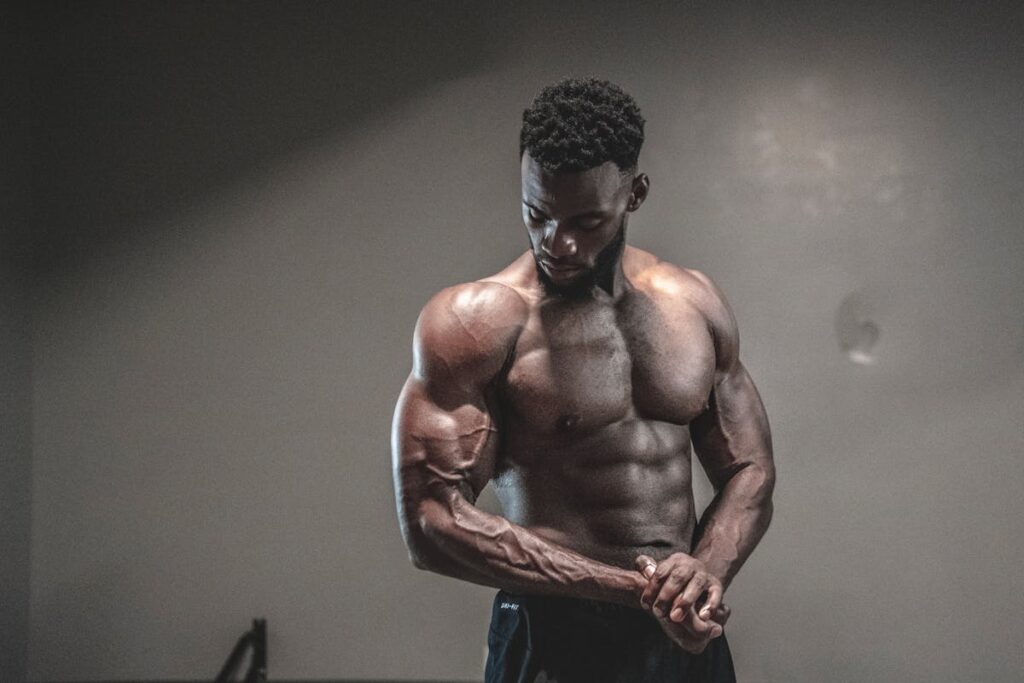
Recommended Safety Measures:Top Chest Workouts for 13-Year-Olds
- Proper Guidance:
- Always consult with a fitness trainer or coach who can provide appropriate techniques and tailor exercises to individual needs.
- Warm-Up and Cool-Down:
- Incorporate warm-up and cool-down exercises to prepare muscles and reduce the risk of injury.
- Avoid Overexertion:
- Focus on form and gradually increase weight or intensity to avoid straining muscles or causing injury.
- Balanced Routine:
- Ensure the exercise regimen includes a balanced approach, targeting various muscle groups to promote overall fitness and prevent muscle imbalances.
Safety Guidelines for 13-Year-Olds in Strength Training
Warm-Up and Cool-Down
- Begin each session with a 5-10 minute warm-up.
- Include light cardio and dynamic stretches.
- End with a 5-10 minute cool-down, incorporating static stretches.
Proper Form and Technique
- Focus on mastering the correct form before increasing weights.
- Use mirrors or record videos to monitor and improve posture.
- Avoid heavy weights that compromise technique.
Supervision and Guidance
- Always train under the supervision of a knowledgeable coach or guardian.
- Receive proper instruction before attempting new exercises.
- Seek feedback regularly to ensure correct execution.
Appropriate Exercises
- Start with bodyweight exercises: push-ups, planks, and wall slides.
- Progress to light dumbbells or resistance bands.
- Avoid high-risk movements like heavy bench presses or overhead lifts.
Gradual Progression
- Increase weight and intensity gradually.
- Follow the “10% rule”: do not increase weight or volume by more than 10% per week.
- Allow adequate recovery time between sessions.
Frequency and Duration
- Training sessions should be limited to 2-3 times per week.
- Each session should last no more than 45 minutes.
- Allow at least one day of rest between strength training sessions.
Hydration and Nutrition
- Maintain proper hydration by drinking water before, during, and after workouts.
- Consume a balanced diet rich in proteins, carbohydrates, and healthy fats.
- Snack on fruits or a small protein bar post-workout for recovery.
Listening to the Body
- Pay attention to any signs of pain or discomfort.
- Stop immediately if experiencing sharp pain or prolonged soreness.
- Consult a healthcare professional if injuries occur.
Equipment and Environment
- Use age-appropriate equipment, including lighter weights and resistance bands.
- Ensure the workout area is free from hazards and has sufficient space.
- Wear suitable training attire, including supportive footwear.
Enjoyment and Motivation
- Keep workouts fun and varied to maintain interest.
- Set realistic and achievable goals.
- Celebrate progress and milestones to encourage continued participation.
Understanding the Basics of Chest Anatomy
Understanding chest anatomy is pivotal for effective and safe workouts. The chest muscles, primarily the pectoralis major and pectoralis minor, play crucial roles in upper body strength and movement.
Key Chest Muscles
- Pectoralis Major:
- Location: Extends across the upper chest and attaches to the humerus (bone of the upper arm).
- Function: Responsible for movements such as flexion, adduction, and internal rotation of the shoulder. It aids in pushing actions like in push-ups or bench presses.
- Pectoralis Minor:
- Location: Lies beneath the pectoralis major and attaches to the ribs and the scapula (shoulder blade).
- Function: Stabilizes the scapula and assists in breathing by elevating the ribs. It is engaged during stabilizing moves.
- Serratus Anterior:
- Location: Positioned on the side of the chest and extends to the upper ribs.
- Function: Essential for scapula protraction and upper arm movement.
Understanding where these muscles are and their roles helps in targeting them during workouts.
Importance of Proper Form
Maintaining the correct form ensures muscles are targeted effectively and reduces injury risk. When executing chest exercises, like push-ups:
- Alignment: Keep the body straight, prevent sagging or arching of the back.
- Hand Position: Place hands below shoulders to avoid undue stress.
- Movement Control: Lower and push up in a controlled manner to engage muscles properly.
Safety Tips
- Warm-Up: Perform dynamic stretches to prepare muscles and joints.
- Progression: Begin with simpler exercises before advancing to complex ones.
- Rest: Allow muscle recovery time to prevent strain or injury.
By understanding chest anatomy, using proper form, and following safety measures, adolescents can maximize workout benefits and build chest strength effectively.
Warm-Up Exercises to Prevent Injury
Before starting any chest workout, it is crucial to prepare the body with proper warm-up exercises. This preparation helps in preventing injuries and ensures that the muscles are ready for the workout ahead.
Dynamic Stretching
- Arm Circles: Spread arms straight out to the sides. Begin making small circles and gradually increase the size. Perform for 30 seconds in each direction.
- Cross-Body Arm Swings: Swing arms horizontally across the body. Alternate top hand position with each swing. Continue for 1 minute.
Mobility Drills
- Shoulder Rolls: Roll shoulders forward in a circular motion for 30 seconds, then switch to rolling them backward for another 30 seconds.
- Scapular Push-Ups: Assume a push-up position but keep arms straight. Focus on moving shoulder blades together and apart. Aim for 10-15 repetitions.
Light Cardio
- Jumping Jacks: Perform for 1-2 minutes to increase heart rate and blood flow.
- Arm Jogging: Jog in place while moving arms as if running. Continue for 1-2 minutes.
Band Exercises
- Resistance Band Pull-Aparts: Hold a resistance band shoulder-width apart. Pull the band outward while keeping arms straight. Perform 15-20 repetitions.
- Band Overhead Stretches: Hold a resistance band and stretch it overhead while keeping arms straight. Perform for 1 minute.
Chest-Specific Warm-Ups
- Wall Push-Ups: Stand a few feet away from a wall. Place hands on the wall at shoulder height. Perform push-ups against the wall for 15-20 repetitions.
- Chest Expansions: Interlock fingers behind the back and lift arms to open the chest. Hold the position for 20-30 seconds.
Cool Down
- Deep Breaths: Inhale deeply through the nose and exhale through the mouth. Repeat for 1-2 minutes.
- Child’s Pose: Kneel on the floor, sit back on the heels, and stretch arms forward on the floor. Hold for 30 seconds to stretch the back and chest muscles.
Conclusion
By following these structured warm-up exercises, 13-year-olds can effectively prepare their bodies for a safe and impactful chest workout.
Bodyweight Exercises: The Foundation
Bodyweight exercises serve as a crucial base for 13-year-olds starting on their fitness journey, offering an excellent way to build chest strength safely and effectively without the need for equipment. These exercises can be performed virtually anywhere, making them highly accessible.
Push-Ups
Push-ups are a classic bodyweight exercise that targets the chest, shoulders, and triceps.
- Standard Push-Ups
- Begin in a plank position.
- Hands slightly wider than shoulder-width.
- Lower the body until the chest nearly touches the ground.
- Push back up to the starting position.
- Knee Push-Ups
- Start on the knees instead of the toes.
- Follow the same motion as standard push-ups.
- Ideal for beginners.
Dips Using Household Items
When supervised, dips can be performed using sturdy, home-based items like chairs or a low table.
- Chair Dips
- Place hands on the edge of a chair.
- Extend legs forward, keeping them straight.
- Lower the body by bending the elbows.
- Push back up to the starting position.
Wall Push-Ups
Wall push-ups are an excellent exercise for building chest strength and are easier on the joints.
- Basic Wall Push-Ups
- Stand a few feet from a wall.
- Place hands on the wall at shoulder height.
- Lean in, bringing the chest toward the wall.
- Push back to the starting position.
Incline Push-Ups
Incline push-ups reduce the strain placed on the body while still providing a challenging workout.
- Using a Bench or Step
- Position hands on a bench or step.
- Body should form a straight line from head to heels.
- Lower the chest toward the bench.
- Push back up to the starting position.
Plyometric Push-Ups
For more advanced young athletes, plyometric push-ups add an explosive element.
- Clap Push-Ups
- Perform a standard push-up.
- Push off the ground forcefully enough to clap hands.
- Land softly and proceed to the next repetition.
Quote:
“A strong foundation in bodyweight exercises can set the stage for advanced workouts as the young athlete matures.”
Push-Ups: Variations and Techniques
Push-ups are highly effective for building chest strength in 13-year-olds. They help develop the pectoral muscles while also engaging the shoulders and triceps. It’s essential to incorporate various forms to prevent monotony and target different muscle fibers.
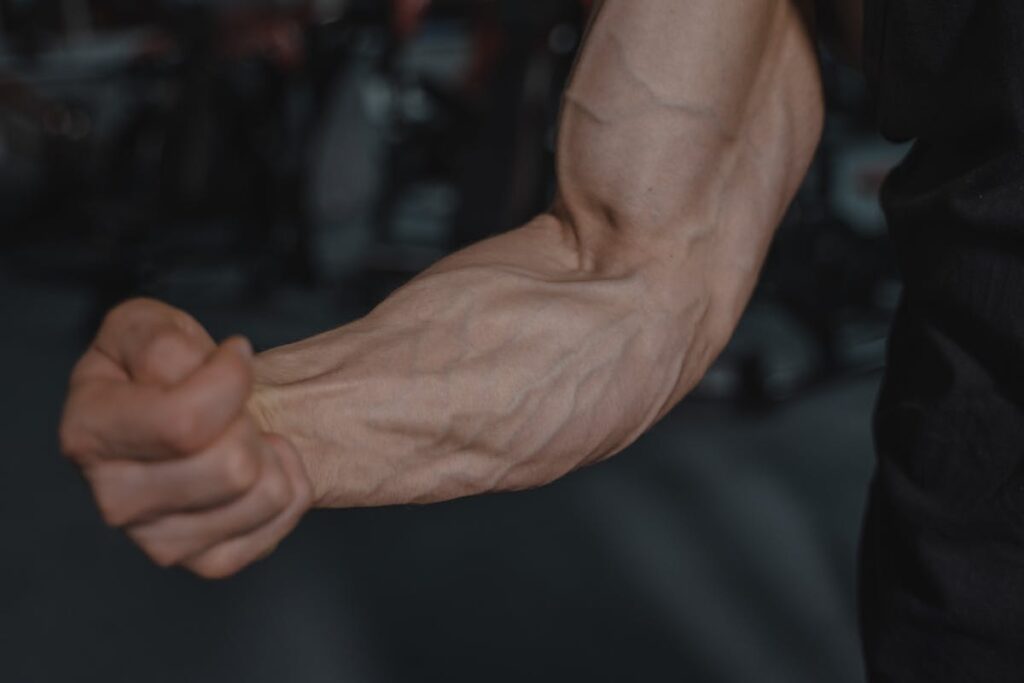
Standard Push-Up
- Technique:
- Begin in a plank position with arms shoulder-width apart.
- Lower the body by bending the elbows until the chest nearly touches the floor.
- Push back up to the starting position.
- Tips:
- Keep the core tight and back straight.
- Avoid flaring the elbows out too far.
- Perform 3 sets of 8-12 repetitions.
Knee Push-Up
- Technique:
- Start in a modified plank position with knees on the ground.
- Lower the chest to the floor by bending the elbows.
- Push back up to the starting position.
- Tips:
- This variation helps build up strength.
- Ensure a straight line from the knees to the shoulders.
- Aim for 3 sets of 10-15 repetitions.
Incline Push-Up
- Technique:
- Place hands on a bench, table, or another elevated surface.
- Perform a push-up by lowering the chest to the surface.
- Push back up to the starting position.
- Tips:
- Easier on the arms and shoulders.
- Keeps the body in a straight line with tightened core.
- Do 3 sets of 10-15 repetitions.
Decline Push-Up
- Technique:
- Place feet on an elevated surface and hands on the ground.
- Lower the chest toward the floor.
- Push back up to the starting position.
- Tips:
- Adds more weight to the arm and shoulder muscles.
- Maintain a straight line from feet to head.
- Complete 3 sets of 6-10 repetitions.
Wide Grip Push-Up
- Technique:
- Place hands wider than shoulder-width.
- Lower the chest to the floor.
- Push back up to the starting position.
- Tips:
- Targets the outer chest muscles.
- Keep elbows at a 45-degree angle.
- Try 3 sets of 8-12 repetitions.
Chest Dips: Proper Form and Benefits
Chest dips are an effective bodyweight exercise targeting the pectoral muscles, triceps, and shoulders. Proper form ensures maximum benefit and reduces injury risk, crucial for 13-year-olds. Here’s a breakdown of how to perform chest dips and the benefits associated:
Proper Form
- Starting Position
- Stand between parallel bars of a dip station.
- Grip the bars firmly, with your palms facing inward.
- Position Yourself
- Lift yourself off the ground by straightening your arms.
- Keep your elbows slightly bent to avoid locking them.
- Lean your torso slightly forward to emphasize the chest muscles.
- Lowering Phase
- Inhale deeply.
- Slowly bend your elbows, lowering your body while keeping your forearms vertical.
- Continue to lower until your upper arms are parallel to the ground or to a comfortable depth.
- Raising Phase
- Exhale as you push yourself back up to the starting position.
- Straighten your arms without locking the elbows.
- Maintain a slight forward lean throughout the movement.
- Repetition
- Repeat the process for the desired number of reps.
- Ensure consistent pace and controlled movements.
Benefits
- Chest Development
- Dips focus on the lower and outer parts of the chest, enhancing overall pectoral muscle shape.
- Upper Body Strength
- Strengthens triceps, shoulders, and chest, contributing to upper body muscular endurance.
- Improved Flexibility
- Enhances shoulder joint flexibility as it involves a significant range of motion.
- Functional Strength
- Promotes better body control and stability, useful in daily activities and sports.
- Minimal Equipment
- Requires only parallel bars, making it accessible for various training environments.
Safety Tips
- Warm-Up
- Ensure a proper warm-up to prepare your muscles and joints.
- Avoid Overstraining
- Perform dips within a comfortable range to prevent injury.
- Supervision
- Have complete supervision, especially for younger teens, to correct form and ensure safety.
- Progressive Training
- Start with assisted dips or bench dips to build strength gradually.
Chest dips, performed correctly, can be a valuable addition to the workout routine of a 13-year-old, fostering strength and muscular development safely.
Light Weight Training: Dumbbell Chest Press
The Dumbbell Chest Press is an effective exercise for young athletes to build chest strength without overexerting themselves. Here’s how to perform the Dumbbell Chest Press correctly:
Equipment Needed
- Light dumbbells: 2-5 pounds each, depending on the child’s strength level
- Exercise bench: Suitable for children or can perform on the floor
Steps to Perform
- Starting Position:
- The child should lie down on a flat bench or floor with knees bent and feet flat.
- Hold a dumbbell in each hand, resting them on the thighs.
- Keep the back flat and core engaged.
- Positioning the Dumbbells:
- Lift the dumbbells one at a time, using the thighs to help raise them to shoulder height.
- Hold the dumbbells directly over the chest with palms facing forward.
- Executing the Press:
- Instruct the child to press the dumbbells toward the ceiling.
- Straighten the arms without locking the elbows.
- Ensure a slow and controlled motion.
- Lowering the Dumbbells:
- Slowly lower the dumbbells back to shoulder level.
- Ensure a controlled descent to prevent injury.
- Repetitions and Sets:
- Aim for 2-3 sets of 10-15 repetitions.
- Rest for 30-60 seconds between sets.
Tips for Safety and Effectiveness
- Proper Form: Emphasize the importance of proper form to avoid strain or injury:
- Keep shoulders pressed down.
- Avoid arching the back.
- Maintain a steady, controlled movement.
- Breathing: Teach proper breathing techniques:
- Exhale when pressing the dumbbells.
- Inhale when lowering them.
- Weight Selection: Start with the lightest dumbbells:
- Increase weight gradually as strength improves.
- Supervision: Ensure adult supervision at all times:
- Provide assistance if needed.
- Correct form throughout the exercise.
Benefits for 13-Year-Olds
- Muscle Building: Helps develop pectoral muscles.
- Coordination and Balance: Enhances stabilizing muscles.
- Confidence Boost: Success in lifting can improve self-esteem.
By following these guidelines, 13-year-olds can safely and effectively incorporate the Dumbbell Chest Press into their training routine.
Introduction to Resistance Bands for Chest Workouts
Resistance bands are versatile tools that can make chest workouts effective and safe for 13-year-olds. These elastic bands provide adjustable resistance to movements, allowing for a full range of motion without the strain associated with heavier free weights. Incorporating resistance bands into a workout routine can help build strength, improve flexibility, and reduce the risk of injury.
Benefits of Resistance Bands
- Portable: Easy to carry and use anywhere, making them convenient for young athletes.
- Versatile: Suitable for a variety of exercises targeting different muscle groups.
- Adjustable Resistance: Resistance levels can be easily modified to match the user’s strength and abilities.
- Safe: Lower risk of injury compared to free weights due to controlled movements.
Safety Tips
- Correct Size: Ensure the band is appropriate for the user’s strength level.
- Proper Form: Maintain good form throughout exercises to prevent injury.
- Supervision: Adult supervision is recommended to guarantee safe and effective usage.
- Warm-Up: Always begin with a warm-up to prepare muscles and joints.
Basic Chest Exercises with Resistance Bands
1. Resistance Band Push-Ups
- Position the band across the upper back and hold the ends under the hands.
- Perform a standard push-up while maintaining controlled movement.
- Ensure the chest nearly touches the ground before pushing back up.
2. Standing Chest Press
- Attach the band to a stable surface at chest height.
- Stand with feet shoulder-width apart and hold the handles.
- Push the handles forward until arms are fully extended, and then return to the starting position.
3. Chest Flies
- Attach the band behind the user at shoulder height.
- Hold the handles with arms outstretched, elbows slightly bent.
- Bring the hands together in front of the chest, ensuring the elbows stay slightly bent.
Implementation Tips
- Consistent Training: Regularly train with resistance bands to see improvements.
- Balanced Routine: Include other body workouts to maintain overall body fitness.
- Fan in: Incorporate rest days to allow muscles to recover and grow.
Using resistance bands provides a practical, effective, and safer way for 13-year-olds to engage in chest workouts, promoting stronger muscles and better fitness habits.
Incorporating Fun Activities to Engage Teens
To ensure teens remain enthusiastic about their chest workouts, incorporating fun activities is crucial. Here are several strategies:
Use Games and Challenges
Creating games and friendly competitions can motivate teens to work harder while having fun:
- Timed Challenges: Set a timer and see who can complete the most push-ups.
- Obstacle Courses: Design a course that includes chest-focused exercises like monkey bars or push-up stations.
- Points System: Assign points for different exercises and let teens accumulate them for small rewards.
Leverage Technology
Technology can be an excellent tool to make workouts more engaging:
- Fitness Apps: Utilize apps that track progress and provide virtual workout partners.
- Interactive Videos: Follow along with workout videos specifically designed for teens.
- Wearable Tech: Use devices to monitor heart rate and other metrics, gamifying the workout experience.
Group Workouts
Working out with peers can greatly enhance the enjoyment and commitment level:
- Partner Exercises: Incorporate exercises that require teamwork, like partner-resisted push-ups.
- Small Group Classes: Organize or join teen-oriented fitness classes focusing on chest exercises.
- Workout Clubs: Establish a club where teens meet regularly to exercise together.
Music and Beats
Music can elevate the workout experience:
- Create Playlists: Develop playlists of high-energy songs tailored to their preferences.
- Rhythm-Based Exercises: Set exercises to the beat of songs for added fun.
- Live DJs: Occasionally, have live DJ sessions during workouts to add excitement.
Theme-Based Sessions
Designing workouts around themes can capture teens’ interest:
- Superhero Workouts: Mimic the training regimens of popular superheroes.
- Sports Training: Incorporate exercises from their favorite sports, focusing on chest strength.
- Adventure Workouts: Set up scenarios like “rescue missions” requiring specific exercises.
Reward Systems
Incentives can drive motivation:
- Achievement Badges: Offer badges or certificates for reaching milestones.
- Prize Drawings: Enter teens into prize drawings for regular attendance or participation.
- Leaderboards: Maintain a leaderboard to foster healthy competition.
These strategies can transform chest workouts from mundane to exhilarating, ensuring teens stay engaged and benefit from their training sessions.
Cool Down and Stretching: A Must for Recovery
Engaging in proper cool-down and stretching exercises is vital for the overall recovery and long-term health of young athletes. After intense chest workouts, it’s important to allow the muscles to gradually return to their resting state. This process aids in reducing muscle soreness, preventing injuries, and enhancing flexibility.
Benefits of Cooling Down
- Gradual Heart Rate Reduction:
- Reduces the risk of dizziness or fainting by preventing blood from pooling in the extremities.
- Promotes a gradual return of the heart rate to its resting state.
- Muscle Recovery:
- Helps in flushing out lactic acid, a byproduct of exercise that contributes to muscle soreness.
- Encourages muscle repair and growth by increasing blood flow to the working muscles.
Effective Cool Down Techniques
- Light Cardio:
- Incorporate 5-10 minutes of light cardio activity such as walking or slow jogging.
- Helps to reduce muscle stiffness and prepare the body for stretching.
- Dynamic Stretching:
- Perform dynamic stretches, which involve controlled movements to improve flexibility and range of motion.
- Examples: Arm circles, shoulder rolls, and chest fly movements.
Importance of Stretching
- Improved Flexibility:
- Regular stretching can increase the flexibility of the chest muscles, which is crucial for performing chest workouts effectively.
- Improves overall posture and muscle function.
- Injury Prevention:
- Helps in reducing muscle tension and increases the range of motion in the joints.
- Prevents muscle strains and other injuries by keeping the muscles pliable.
Recommended Stretches
- Chest Stretch:
- Stand tall, interlace the fingers behind the back, and gently lift the hands upwards while keeping the arms straight. Hold for 20-30 seconds.
- Stretches the pectoral muscles and the front shoulders.
- Child’s Pose:
- Kneel on a mat, sit back on the heels, then reach the arms forward, lowering the torso towards the floor. Hold for 30-60 seconds.
- Stretches the back and shoulders, relieving tension built up from chest exercises.
- Wall Stretch:
- Place one hand on a wall, step forward with the opposite foot, and gently twist the torso away from the wall. Hold each side for 20-30 seconds.
- Targets the chest and shoulder muscles effectively.
Properly cooling down and stretching is essential for young athletes to ensure they enjoy a safe and effective workout routine.
Creating a Balanced Weekly Workout Plan
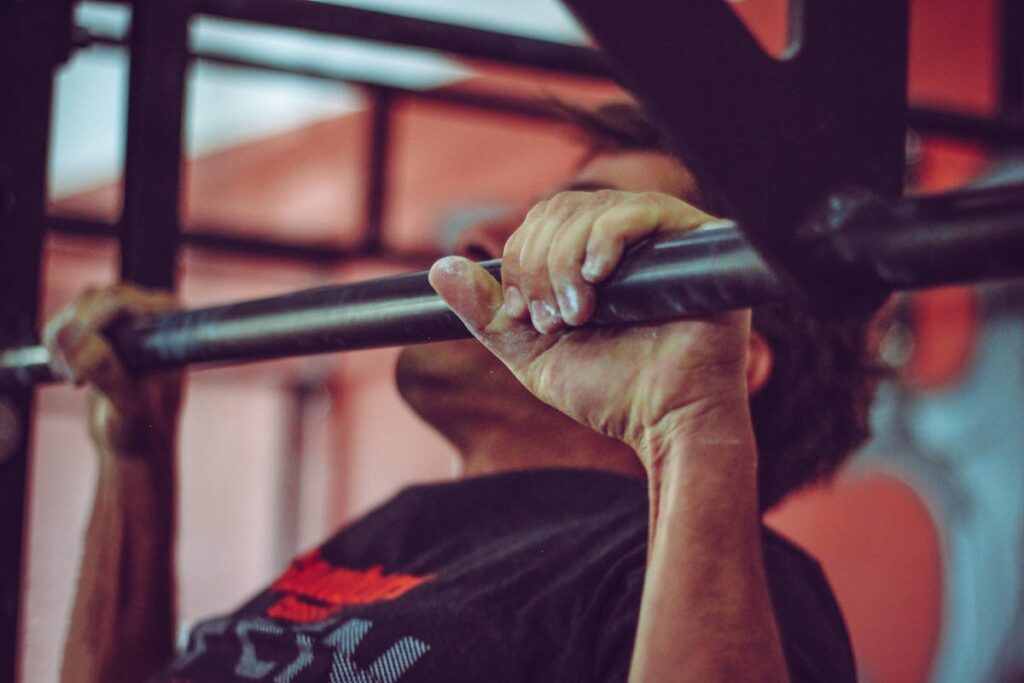
Designing a balanced workout plan for a 13-year-old involves integrating a variety of exercises that work different muscle groups, ensuring safety, effectiveness, and enjoyment. The plan should discourage overuse injuries and enhance overall fitness. Below are steps and considerations to create a balanced weekly workout plan:
- Assess Current Fitness Level:
- Evaluate the individual’s current fitness status.
- Determine strengths and areas needing improvement.
- Set Realistic Goals:
- Goals should be specific, measurable, achievable, relevant, and time-bound (SMART).
- Examples include improving push-up count, increasing stamina, or mastering new exercises.
- Include a Variety of Exercises:
- Cardiovascular Exercises:
- Running, cycling, or swimming for at least 20-30 minutes, 3 times a week.
- Strength Training:
- Focus on bodyweight exercises such as push-ups, pull-ups, and planks.
- Include weights cautiously, starting with light weights.
- Flexibility and Balance:
- Incorporate stretching and balance exercises, like yoga or static stretching, 2-3 times weekly.
- Cardiovascular Exercises:
- Rest and Recovery:
- Ensure at least one rest day per week to allow muscle recovery.
- Encourage adequate sleep and proper nutrition to support overall health.
- Sample Weekly Plan:
- Monday:
- Cardiovascular exercise (30-minute run)
- Chest workout (push-ups, chest presses)
- Tuesday:
- Yoga and flexibility exercises
- Wednesday:
- Strength training (planks, dumbbell exercises)
- Light cardio (15-minute bike ride)
- Thursday:
- Rest or active recovery (light stretching, walking)
- Friday:
- Chest and upper body workouts (push-ups, resistance band exercises)
- Flexibility exercises
- Saturday:
- Cardiovascular exercise (swimming or running)
- Lower body and core workout (squats, lunges, sit-ups)
- Sunday:
- Rest day
- Monday:
- Progression and Adaptation:
- Gradually increase workout intensity every few weeks.
- Adapt exercises based on emerging strengths and weaknesses.
- Encouragement and Monitoring:
- Regularly monitor progress and adjust the plan as necessary.
- Motivate to stay consistent while emphasizing the fun aspect of physical activity.
Creating this plan ensures a balanced approach to fitness, helping a 13-year-old develop strength, flexibility, and endurance safely.
Nutrition Tips to Support Muscle Growth and Recovery
Protein Intake
- Ensure a diet rich in protein, which is essential for muscle repair and growth.
- Include lean meats, fish, eggs, dairy products, beans, and legumes in daily meals.
- Aim for about 1.0-1.5 grams of protein per kilogram of body weight.
Carbohydrates
- Consume adequate carbohydrates for energy and to support muscle recovery.
- Focus on whole grains, fruits, and vegetables.
- Opt for complex carbs like oatmeal, brown rice, and whole wheat bread.
Healthy Fats
- Incorporate healthy fats for hormone production and joint health.
- Sources include avocados, nuts, seeds, and olive oil.
- Avoid trans fats and limit saturated fats.
Hydration
- Drink plenty of water throughout the day.
- Hydrate before, during, and after workouts.
- Consider adding electrolytes if participating in intense physical activity.
Timing of Meals
- Eat a balanced meal with carbohydrates, protein, and fats within 30-60 minutes after workouts.
- Maintain regular meal intervals to ensure continuous nutrient supply.
- Avoid high-sugar snacks that can lead to energy crashes.
Vitamins and Minerals
- Ensure sufficient intake of vitamins and minerals, particularly calcium, vitamin D, and iron.
- Eat a variety of fruits and vegetables or consider a multivitamin if dietary intake is insufficient.
- Monitor iron levels, especially in young athletes, to prevent deficiencies.
Supplements
- Consider protein powder if daily protein intake is insufficient through food sources.
- Use supplements sparingly and opt for high-quality products.
- Always consult a healthcare provider before starting any new supplement routine.
Rest and Recovery
- Get at least 8-9 hours of sleep per night to facilitate muscle recovery.
- Encourage taking rest days to prevent overtraining and injury.
- Practice relaxation techniques like stretching and yoga.
Balanced Diet
- Maintain a balanced diet with a mix of macronutrients and micronutrients.
- Avoid fad diets or extreme restrictions that could compromise growth and health.
- Listen to the body’s hunger cues and eat intuitively.
By following these nutrition tips, proper support for muscle growth and recovery can be ensured, maximizing the benefits of chest workouts and overall physical development.
Mistakes to Avoid and Best Practices for Beginners
Starting with chest workouts at the age of 13 requires careful attention to form, technique, and safety to avoid injuries. Here are some common mistakes and best practices to ensure effective and safe workouts:
Mistakes to Avoid
- Lifting Too Heavy:
- Beginners often try to lift weights that are too heavy, which can cause strain on muscles and joints.
- Start with lighter weights to master the form before progressing to heavier weights.
- Ignoring Warm-Up and Cool-Down:
- Skipping warm-up exercises decreases muscle flexibility and increases the risk of injury.
- Always include a proper warm-up and cool-down routine to prepare the muscles and aid recovery.
- Improper Form:
- Incorrect form leads to ineffective workouts and potential injuries.
- Focus on learning and maintaining proper form for each exercise.
- Overtraining:
- Exercising the same muscle group daily can lead to overuse injuries.
- Make sure to allow adequate rest between chest workouts to let muscles recover.
- Neglecting Other Muscle Groups:
- Focusing only on the chest can lead to muscle imbalances.
- Include a balanced workout routine that targets all major muscle groups.
Best Practices
- Use Bodyweight Exercises:
- For beginners, bodyweight exercises like push-ups are excellent for building strength without risk of overloading.
- Seek Guidance from Coaches:
- Work out under the supervision of qualified coaches or trainers to learn the correct techniques and avoid mistakes.
- Incorporate a Balanced Diet:
- Nutrition plays a crucial role in muscle development and recovery.
- Ensure a diet rich in protein, carbohydrates, and healthy fats.
- Stay Hydrated:
- Dehydration can affect performance and recovery.
- Drink plenty of water before, during, and after workouts.
- Consistent Progression:
- Gradually increase the difficulty of workouts by adding more reps, sets, or using resistance bands.
- Avoid sudden jumps in intensity to prevent injuries.
By adhering to these guidelines, 13-year-olds can enjoy safe, effective chest workouts that contribute to overall fitness and well-being.
Monitoring Progress and Staying Motivated
When adolescents engage in chest workouts, keeping track of their progress and staying motivated are crucial components. Monitoring progress helps ensure that they are advancing safely and effectively without overexertion. Motivation plays a key role in maintaining a consistent workout regimen.
Setting Realistic Goals
Setting achievable goals can inspire young athletes to stay committed. Goals should be:
- Specific: Clearly define what needs to be accomplished.
- Measurable: Track progress quantitatively, such as the number of reps or weight lifted.
- Attainable: Ensure goals are realistic given their current fitness level.
- Relevant: Focus on goals that are significant to overall fitness improvement.
- Time-bound: Set a time frame to achieve each goal.
Keeping a Workout Journal
A workout journal is a valuable tool for tracking progress. Entries can include:
- Exercises performed: The specific chest exercises completed during each session.
- Repetitions and sets: Number of repetitions and sets completed.
- Weight used: The amount of weight lifted, if applicable.
- Feelings and feedback: Personal reflections on how the workout felt and any adjustments needed.
Regular Fitness Assessments
Conducting regular fitness assessments helps review progress and reassess goals. These assessments may involve:
- Strength tests: Measuring the amount of weight that can be lifted.
- Endurance tests: Evaluating the ability to perform exercises over prolonged periods.
- Flexibility tests: Checking the range of motion in the chest and shoulders.
Staying Motivated
Maintaining motivation is essential for long-term success. Some strategies include:
- Variety in workouts: Mixing different exercises to prevent boredom.
- Support systems: Working out with friends or family for encouragement.
- Positive reinforcement: Celebrating milestones and progress, no matter how small.
- Rest and recovery: Ensuring adequate rest days to avoid burnout.
Tracking Technology
Utilizing technology can enhance monitoring and motivation:
- Fitness apps: Apps designed to log workouts and provide progress analytics.
- Wearable devices: Fitness trackers that monitor activity levels, heart rate, and progress.
- Online communities: Forums and social media groups for sharing achievements and receiving support.
Monitoring progress and staying motivated are pivotal to the effectiveness and safety of chest workouts for 13-year-olds. With adequate tracking and encouragement, young athletes can experience continual growth and enjoyment in their fitness journey.
Conclusion: Long-Term Benefits of Starting Young
Engaging in chest workouts at a young age offers numerous advantages that can extend well into adulthood. Developing an early habit of regular exercise sets a foundation for a healthy lifestyle. Some key long-term benefits include:
- Physical Health: Starting with proper chest workouts helps develop muscle strength and cardiovascular health. Strong chest muscles aid in improving overall posture, reducing the risk of back pain and other musculoskeletal issues.
- Mental Well-being: Exercise is known to release endorphins, which are natural mood lifters. Adolescents who engage in regular workouts often exhibit better mental health, experiencing lower levels of anxiety and stress.
- Discipline and Routine: Introducing a structured workout routine at a young age instills discipline and a sense of routine. These habits are beneficial for academic performance and other areas of life.
- Improved Self-Esteem: Achieving fitness milestones can significantly boost self-esteem and body image. This positive self-perception often translates into other areas, encouraging a proactive attitude toward challenges.
- Injury Prevention: Strengthening muscles early can enhance joint stability and reduce the risk of sports-related injuries. Properly conditioned muscles and tendons are less prone to strains and sprains.
Adolescents who start exercising young can carry these health benefits through adulthood, setting them up for a longer, healthier life. Consistent, safe, and effective chest workouts are crucial elements of this beneficial regimen. The skills and habits developed during these formative years pave the way for continued physical activity, fostering lifelong well-being.
Engaging in physical fitness at a young age also fosters a deeper understanding of one’s body, enabling better decisions related to health and fitness in the future. It prepares individuals to meet physical and mental challenges with greater resilience. While immediate physical changes may be evident, the long-term gains—emotional, psychological, and physical—are profound, imparting enduring benefits that go beyond the formative years.
